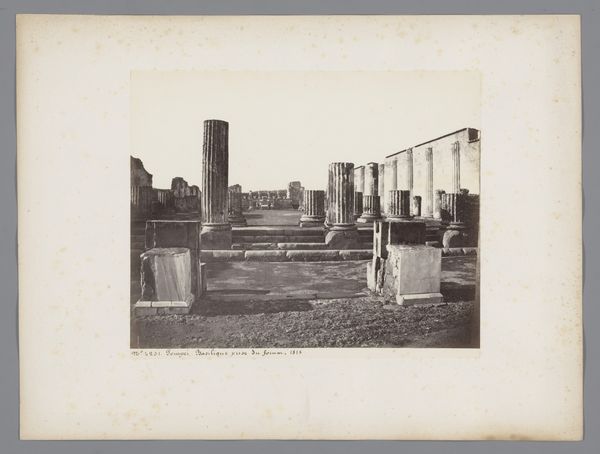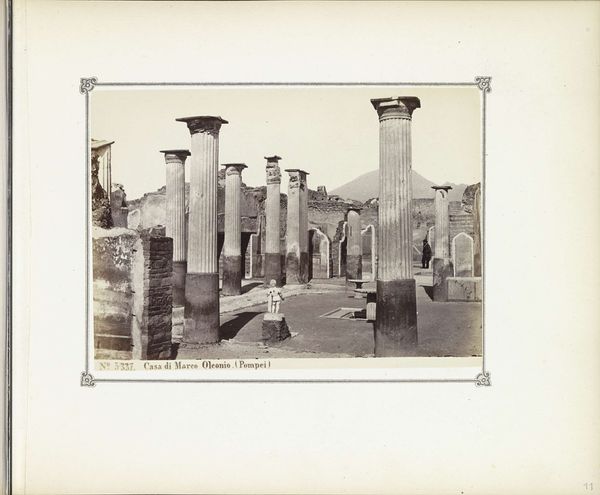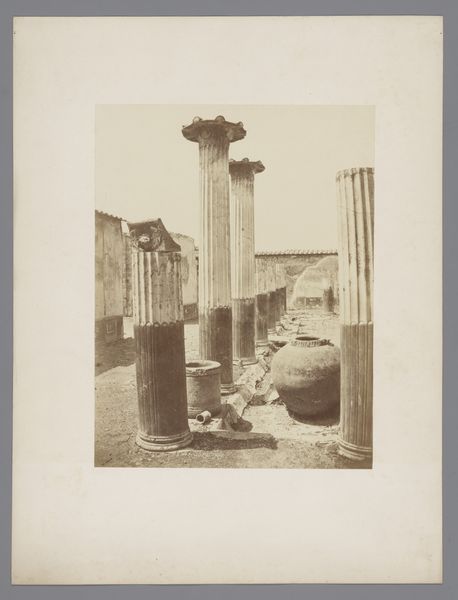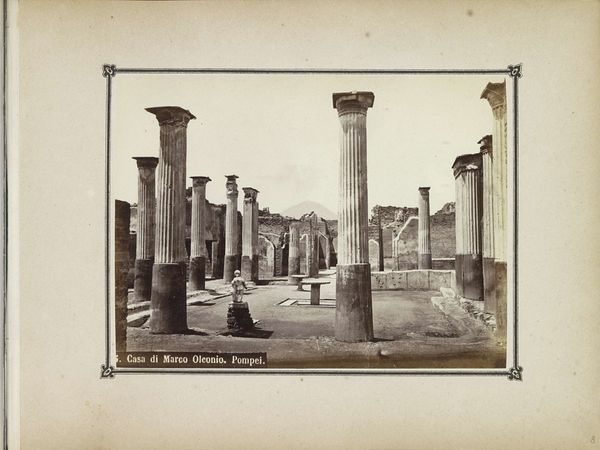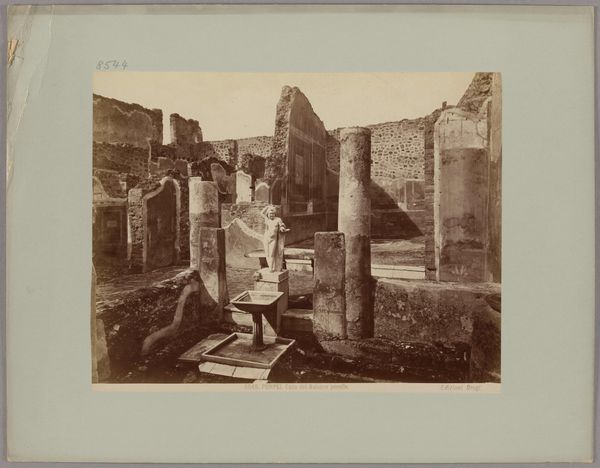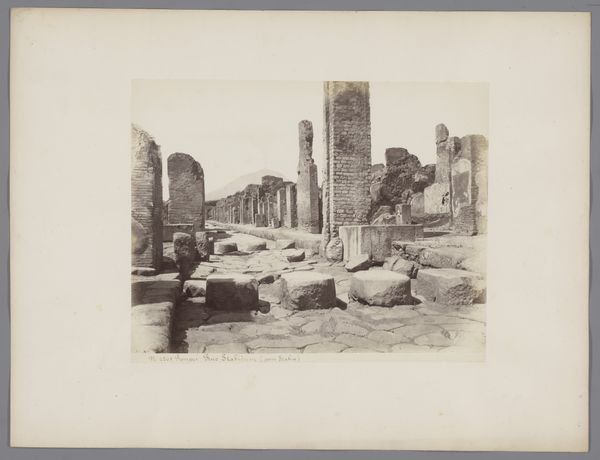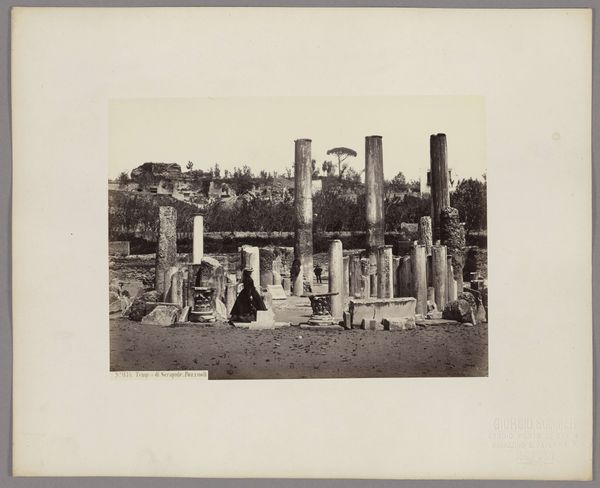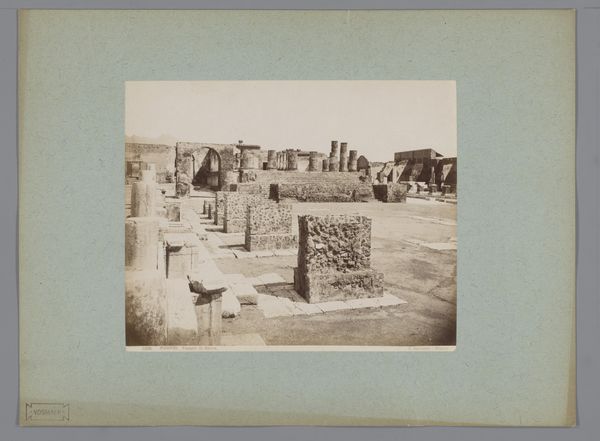
photography, gelatin-silver-print
#
landscape
#
photography
#
ancient-mediterranean
#
column
#
gelatin-silver-print
Dimensions: height 203 mm, width 252 mm
Copyright: Rijks Museum: Open Domain
Editor: Here we have Giorgio Sommer’s "Gezicht op de ruïne van het macellum van Pozzuoli," a gelatin silver print from before 1879, capturing the ruins of an ancient market. It's strikingly stark. The ruins stand as ghostly reminders of a bustling past. What strikes you most about this photograph? Curator: The photograph's strength lies in its ability to confront us with the power dynamics inherent in visualizing the past. The ruins aren't just stones; they're evidence of empire, trade, and a specific social order. How does seeing them presented in this way—frozen in time, almost—make you think about colonialism and its lasting impact on the landscape, and our interpretation of other culture's history? Editor: That's a perspective I hadn't considered. The act of capturing and presenting these ruins itself feels like a form of claiming ownership, doesn't it? I was focusing more on the visual aspect, but I understand your point that we should acknowledge our bias when studying historical photography and analyze it with its possible historical ramifications. Curator: Exactly. And the figures present, or rather absent in a photo like this one, also tell a story of access and power, framing this site within the visual language of 19th-century European exploration. Consider the gaze inherent in these landscape images—whose perspective are we truly seeing? Editor: So it's not enough to simply admire the aesthetics, we need to dissect the context. I appreciate that—it adds layers to how I perceive and understand photographs like this. I'll try to look for those nuances from now on. Curator: Glad I could bring an informed view and add something more to the original experience.
Comments
No comments
Be the first to comment and join the conversation on the ultimate creative platform.
